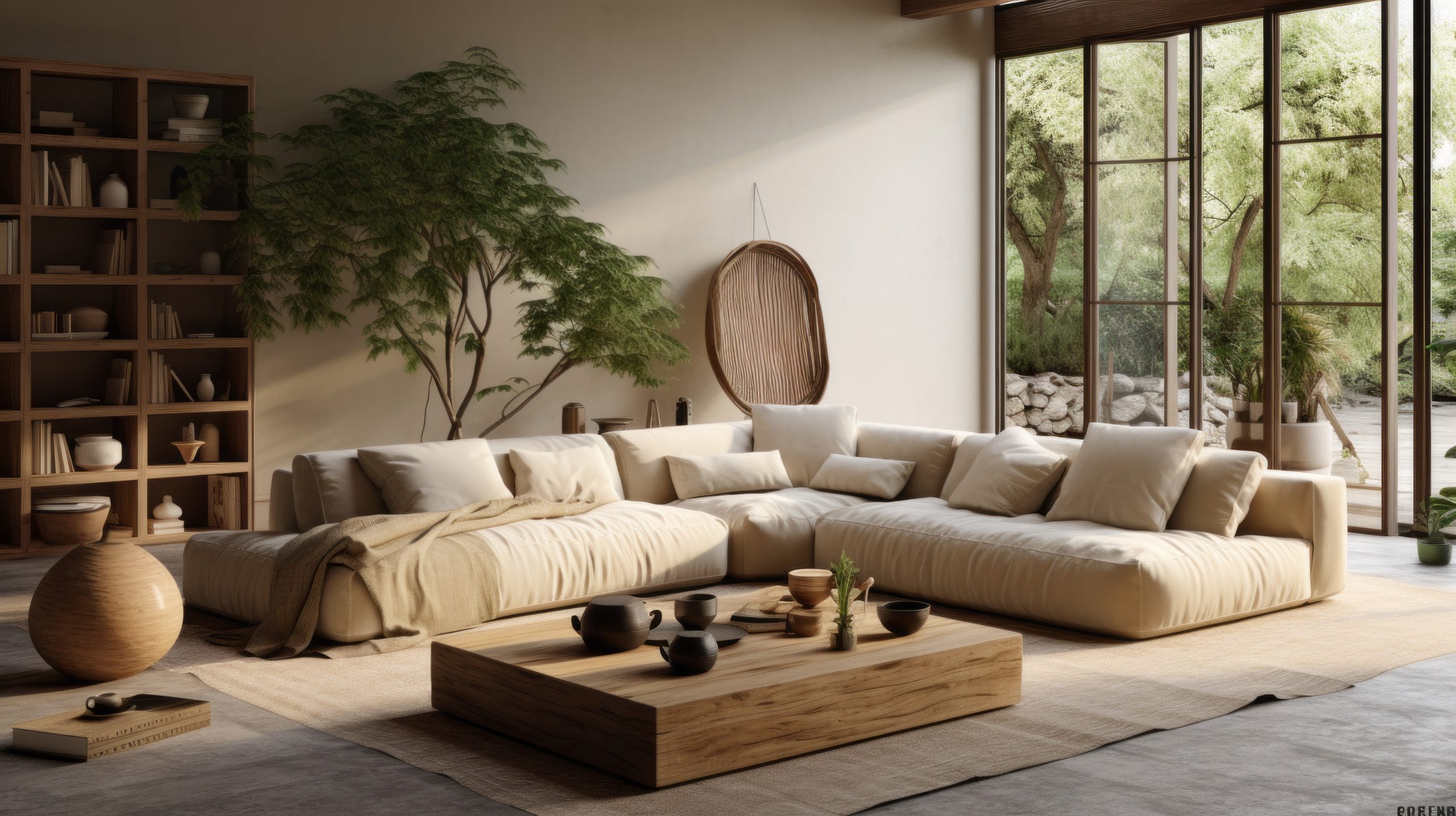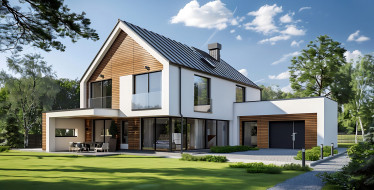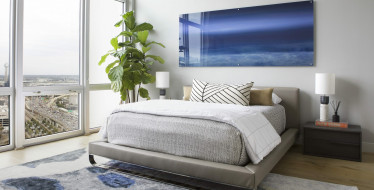As with most business categories, trends come and go, but one design trend has been steadily gaining traction and continues to do so in 2024: biophilic design. If you know how Beyond Interior Design works or have ready some of our previous blog posts, you know that we are advocates and proponents of biophilic design and all that it entails. Rooted in the innate human connection to nature, biophilic design seeks to bring the outdoors inside, creating spaces that not only look stunning but also foster well-being and harmony. Wellness design is one of the pillars of our organization and biophilic design gives us a strong foundation to stand on as we incorporate biophilic elements in interior spaces.
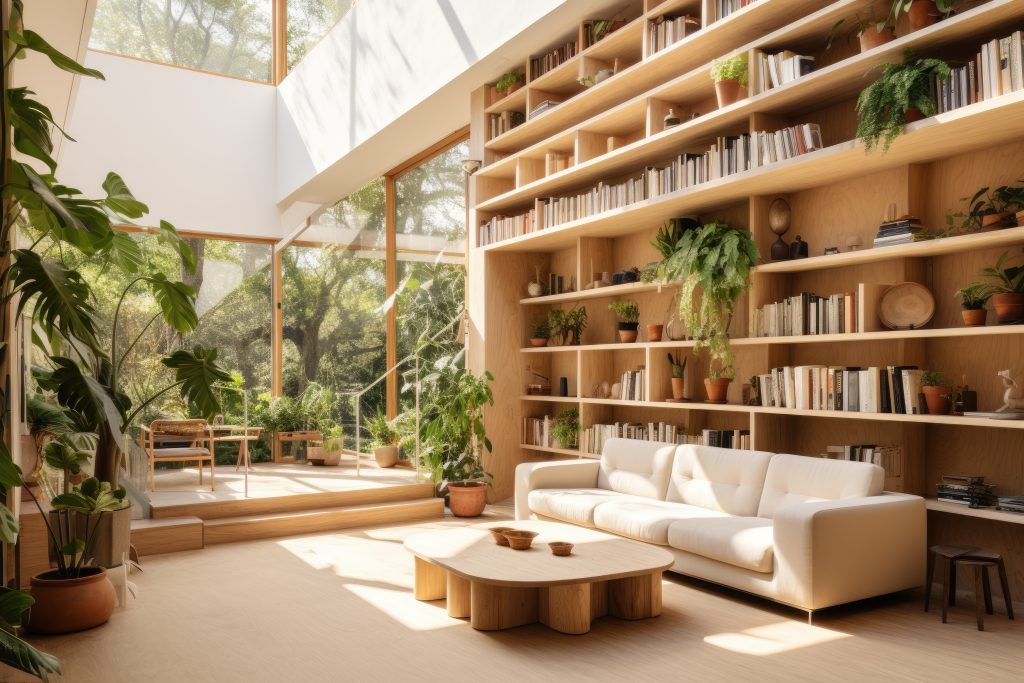
Characteristics of Biophilic Design
- Natural Elements: At the heart of biophilic design are natural elements such as plants, water features, and natural materials like wood and stone. These elements not only add visual appeal but also evoke a sense of tranquility and connection to the outdoors.
- Abundant Natural Light: Maximizing natural light is a fundamental aspect of biophilic design. Large windows, skylights, and strategically placed mirrors help flood spaces with sunlight, reducing the reliance on artificial lighting and creating a bright, airy atmosphere. Natural light not only brightens up the space but it also has positive effects on your overall health and mood.
- Greenery and Living Walls: Incorporating plants into interior spaces is perhaps the most recognizable characteristic of biophilic design. From potted plants to vertical gardens, greenery brings life and vitality to any room while also improving air quality and reducing stress.
- Natural Colors and Textures: Biophilic design often embraces earthy tones and textures inspired by the natural world. Shades of taupe, soft greens, and calming blues promote feelings of serenity and connection to nature, while materials like wood, bamboo, and natural fibers add depth and texture to the space. The colors used in a space have such an impact on, not only the space, but the mood that the space evokes. More on The Art of Color In Design here.
- Biomorphic Shapes and Patterns: Another hallmark of biophilic design is the use of organic shapes and patterns inspired by nature. Curved lines, flowing forms, and patterns reminiscent of leaves or waves create a sense of movement and fluidity, inviting occupants to relax and unwind.
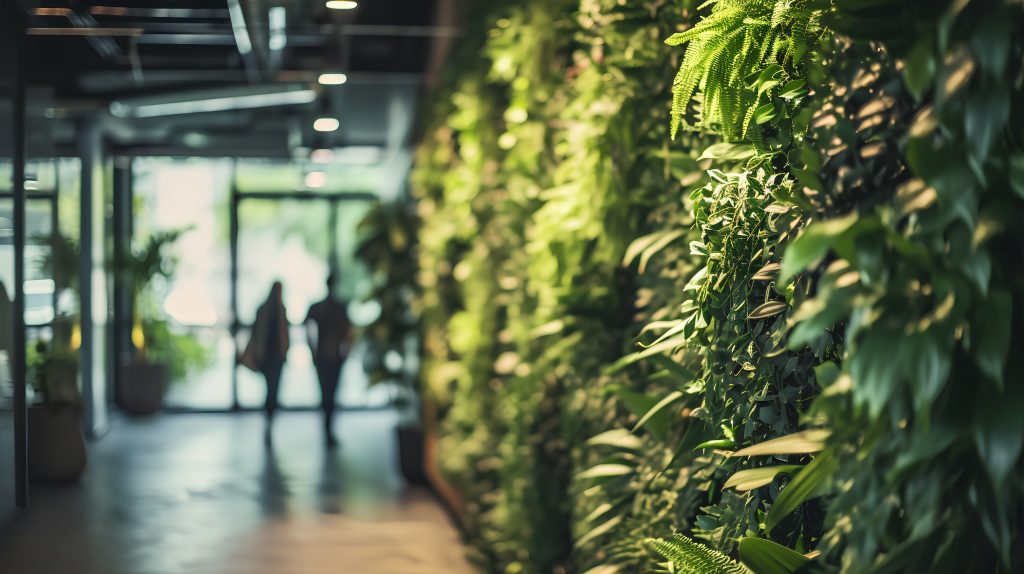
Benefits of Biophilic Design
- Improved Well-being: Numerous studies have shown that exposure to nature and natural elements can have a positive impact on mental and physical well-being. Biophilic design helps reduce stress, increase productivity, and promote overall happiness and satisfaction among occupants.
- Enhanced Indoor Air Quality: Incorporating plants into interior spaces not only adds visual interest but also helps purify the air by filtering out toxins and releasing oxygen. Improved air quality leads to better respiratory health and a greater sense of comfort and vitality.
- Increased Productivity and Creativity: By creating environments that mimic natural settings, biophilic design has been shown to boost cognitive function, creativity, and productivity. Whether it’s a lush green office space or a cozy natural-inspired living room, biophilic elements can inspire and invigorate occupants.
- Sustainable Design Practices: Biophilic design aligns with sustainable design principles by reducing energy consumption, promoting the use of natural materials, and fostering a deeper appreciation for the environment. By bringing nature indoors, we can minimize our ecological footprint while creating beautiful and functional spaces.
- Emotional Connection to Space: Perhaps the most significant benefit of biophilic design is its ability to create a profound emotional connection to the spaces we inhabit. By incorporating elements of nature into our homes, offices, and public spaces, we can foster a sense of belonging, tranquility, and harmony with the world around us.
Biophilic design continues to offer a holistic approach to interior design that goes beyond (no pun intended) aesthetics to prioritize your well-being and that of the planet. By embracing natural elements, maximizing natural light, and creating spaces that inspire and rejuvenate, we can create environments that nurture both body and soul. Homes & Gardens also has some great tips on how to embrace biophilic design in your home even if you aren’t working with a designer.


